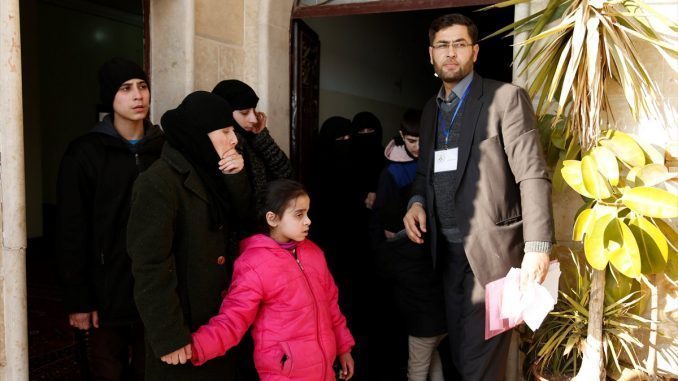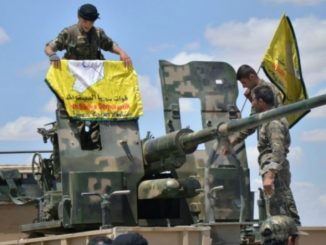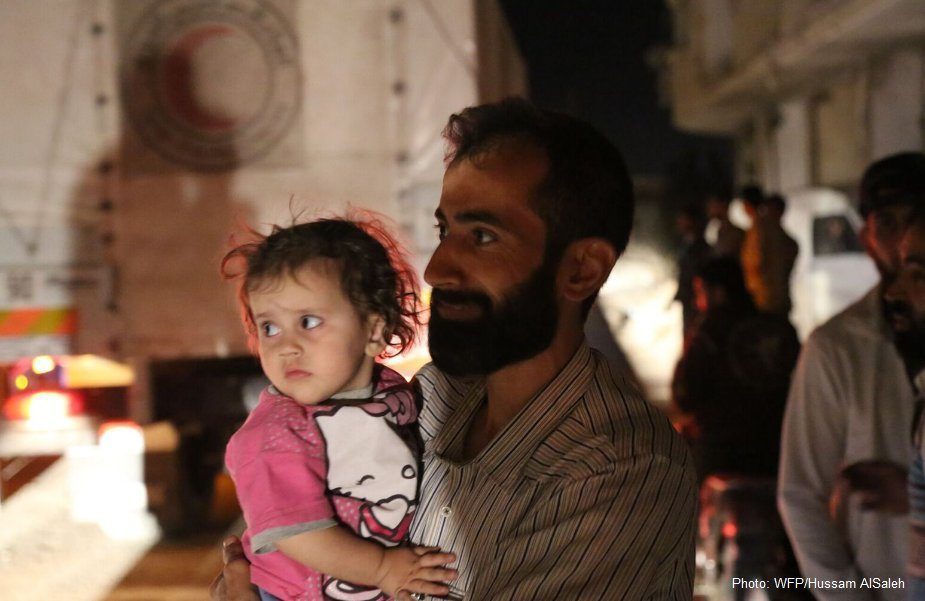
Assad regime declared its readiness to hold new prisoner swap with the Syrian rebels, a move that has been dismissed by the rebels as it comes amid international accusations of crimes against humanity in the regime’s prisons.
The Assad regime said on Monday it was ready to agree on prisoner swaps with rebel groups, which the opposition wants before any negotiations over Syria’s political future.
Syrian state media cited an official source as saying the government was “always ready” to exchange prisoners in its jails for people “kidnapped by terrorist groups”.
This declaration comes days after the first prisoner swap between the two warring parts since years.
However, a rebel official dismissed the statement as a ruse, saying Damascus had far more detainees than the few the rebels held.
“The regime doesn’t give any offer for free. This declaration comes in a critical time to show the world that it is ready to cooperate after massive evidence about crimes against humanity in its prisons,” an analyst told MEO.
“The latest prisoner swap was a few days ago and the rebels forced the regime to accept it after they held women from the regime-supporting areas for more than three years,” he added.
“However, this declaration was suspicion and can be considered as a part of the regime’s media games to look like it is willing to accept a political settlement in Geneva,” he concluded.
A rare prisoner swap
The Syrian Observatory for Human Rights said that regime representatives and rebels on February 8. exchanged 112 people, including 24 children, in the rebel-held Qalaat al-Madiq town in rural Hama. Many had been detained for years.
About half the women were released from government prisons and then taken to opposition-held areas, the Observatory said.
In return, the others, along with three unidentified men, were set free by various rebel groups and shuttled to government-controlled areas along the coast.
Most of the hostages released by rebels were from the coastal Latakia province, the heartland of Assad’s minority Alawite sect, and had been held since 2013.
Some of the prisoners set free by the government had been detained since the start of the uprising in 2011.
Sharbaji was arrested when she went to get a passport, as a way to put pressure on her husband who was active during the 2011 revolution.
In 2016, US Ambassador to the UN, Samantha Power named Sharbaji was one of the 20 women who are political prisoners in the ‘Free the 20’ campaign.
Assad’s dungeons of death
The Syrian crisis began as a peaceful demonstration against the injustice in Syria. Assad regime used to fire power and violence against the civilians and led to armed resistance. 450.000 Syrians lost their lives in the past five years according to UN estimates, and more than 12 million have lost their homes.
ِArrest, torture, enforced disappearance, and executions have been one of Assad regime’s tools to silence anyone suspected to oppose his role and to break the Syrian civilians’ will in gaining freedom.
Tracking the number of people in detention is also difficult. Assad’s “security forces” have converted sports stadiums, abandoned homes, hospitals and schools into jails. Loyalist militias from Iraq, Lebanon and Iran also operate their own secret sites.
However, estimates say that more than 300.000 Syrian are currently held in Assad regime’s prisons, while the Syrian Observatory for Human Rights say that more than 60.000 of them were killed under torture.
What little is known about Assad’s torture machine comes from survivors swapped in prisoner exchanges or released after bribing officials. Relatives of the dead, defectors and hundreds of thousands of regime files smuggled out of the country by activists add to their accounts. Together, they paint a picture of a regime that has tortured and murdered on an industrial scale to silence dissent.
A new report for Amnesty International said that about 13.000 people were hanged secretly and thousands more killed by other ways in Saydnaya prison, one of the most famous brutal detention centers in Syria.
Detainees referred to the prison as “the slaughterhouse”, it said, adding that the hangings had been authorized by officials at the highest level government from 2011.
In August 2013, a military defector code-named Caesar smuggled 53,275 photographs out of Syria. The photos were published depicting rows of emaciated, brutally beaten bodies of detainees — many of them believed to be political protesters — at Assad regime’s military prisons, and show at least 6,786 detainees who died in detention or after being transferred from detention to a military hospital.
Most of the 6,786 victims shown in the Caesar photographs were detained by just five intelligence agency branches in Damascus, and their bodies were sent to at least two military hospitals in Damascus between May 2011, when Caesar began copying files and smuggling them out of his workplace, and August 2013, when he fled Syria.



